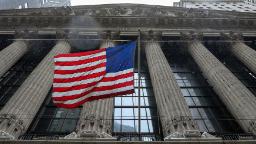
Investors are searching for clarity in the wake of Friday’s collapse of Silicon Valley Bank — the biggest failure of a US bank since 2008. And as they attempt to predict what comes next — be it wider financial chaos, more government regulation, a pause in rate hikes from the Federal Reserve or something else entirely — they’re looking to the past for guidance.
While the collapse of a top-20 bank easily begets comparisons to the global financial crisis of 2008, analysts are looking all the way back to 1991 — though they may only need to go back to last fall.
Here’s how they’re thinking about the state of the banking industry and the economy.
Let’s take it to 1991: Analysts are looking at the Savings and Loans crisis of the late 1980s and early 1990s as a better model for how this current crisis may play out.
Some quick background: S&Ls were like banks, but they specialized in accepting savings deposits and making mortgage loans. In the 1980s, they were deregulated and began making risky investments with depositors’ money. Those investments went sour and S&Ls found themselves at a loss just as the Fed was raising interest rates. That meant that many borrowers couldn’t afford to pay back their loans.
As a result, many S&Ls failed and the government had to step in to bail them out.
Sound familiar?
“If anything, this appears to be a typical bank failure like we saw during the Savings & Loan crisis,” wrote Jaret Seiberg at TD Cowen. “The only difference is that we are dealing with a bank that focuses on technology rather than on real estate.”
Since the S&L crisis, regulators have pushed banks away from short-term investments “for the very reasons that appear to have brought down Silicon Valley Bank,” Seiberg said.
So what can we learn from the crisis? A review of regulation and central bank policy seems certain, wrote Societe Generale’s Kit Juckes in a note on Monday.
“If the S&L crisis is a model of what happens next, we are closer to the peak in rates than the market thought,” he said, meaning that the Federal Reserve could soon stop hiking interest rates to fight inflation. It’s also very possible that the US economy will slip into a mild recession within the next year, he added.
